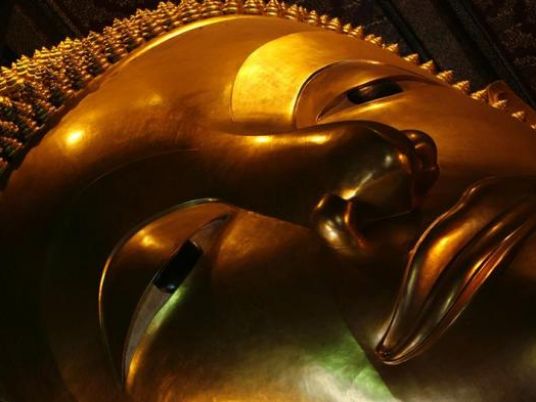
A Buddha statue from China that conceals the remains of a monk who turned himself into a mummy almost a millennium ago is the centerpiece of an exhibition in Budapest.
Visitors to the popular "Mummy World" exhibition at the Natural History Museum see a golden statue of a sitting Buddha, about four-foot (1.2-m) tall. On a television monitor, they can see the skeletal remains of the mummified monk inside it.
"The Buddha statue belongs to a Dutch private collector and when he bought it, he had no idea what it was hiding inside," said Monika Kiss-Stefan, a spokeswoman for the Budapest museum.
The traveling exhibition from the Drents Museum in Assen, the Netherlands, is on display until mid-May, when it will go to Luxembourg.
The statue's secret was revealed gradually, starting in 1997. Its owner suspected it might contain something inside and took it to Utrecht University to have it carbon-dated.
Samples were taken that found a body from the 11th century was concealed inside, Budapest museum curator Ildiko Pap said. A pillow it was sitting on was dated to 300 years later.
Cat scans were done in 2013 and 2014. The latter, at the Meander Medical Centre in Amsterdam, found that in the abdominal cavity, where there had once been organs, there were paper scraps printed with ancient Chinese characters.
The Budapest museum staff were unable to say what the characters mean.
Kiss-Stefan said that while there were around 20 to 25 mummified monks around the world, the one on display was the only one known to be concealed inside a statue.
She said the monk had prepared for his death meticulously. Monks who choose self-mummification ate only seeds for a long time and then roots of a poisonous plant to prevent maggots eating their flesh, she said.
They spent their last days in a pit, meditating, and when they died, their bodies were left until they became mummified.
Pap said self-mummification was practiced in the 10th and 11th centuries, spreading fromJapan to China and elsewhere in Asia. It was not seen as suicide and only high-ranking Buddhist masters were allowed to practice it, in order to reach Nirvana.
The mummified body was covered with clay around 200 to 300 years after the monk's death, followed by several layers of enamel and finally golden paint, to make the statue, she said.
